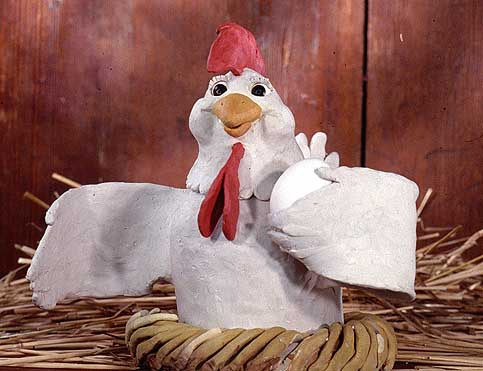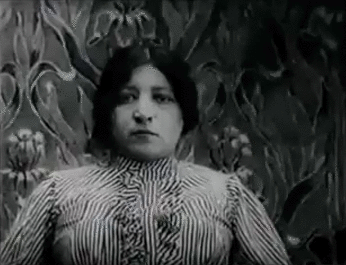|
Curious George (1984 Film)
''Curious George'' (sometimes called ''Curious George: George Goes to the Zoo'') is a 1984 short stop-motion animated children's film, and is based on H. A. Rey's 1941 book of the same name. The film is directed by John Matthews and was produced by Churchill Films. The company also produced ''Curious George Goes to the Hospital'' two years prior in 1982. The two films are often paired together and collectively called ''The Adventures of Curious George''. Plot Curious George is a monkey living in the African jungle. "The Man in the Yellow Hat" meets George and decides to take him to the city. The two begin riding home on a big ship, but George gets distracted by seagulls and falls into the water and must be rescued by the crew of the ship. After reaching the man's home, George is taught how to sip soup. Later, George sees the man smoking a pipe, and wants to try himself. While the man is taking a phone call, George grabs the pipe and starts to smoke, but begins hyperventilating, a ... [...More Info...] [...Related Items...] OR: [Wikipedia] [Google] [Baidu] |
Curious George
Curious George is a fictional monkey who is the title character of a series of popular children's picture books written by Margret and H. A. Rey. Various media, including films and TV shows, have been based upon the original book series. George is described as "a good little monkey, and always very curious". Despite being referred to as a monkey throughout the series, he is depicted without a tail. In the first book, George is caught by "The Man in the Yellow Hat" and taken from Africa to America where the two live together. George and the Man in the Yellow Hat become friends and are shown going on adventures together. George's first appearance was as a monkey named "Fifi" in the book ''Cecily G. and the Nine Monkeys'', which was first published in France during 1939 in the late years. The popularity of the character led the Reys to feature "George" in his own series. Creation The original series was written by the husband-and-wife team of Hans Augusto (H. A.) Rey and M ... [...More Info...] [...Related Items...] OR: [Wikipedia] [Google] [Baidu] |
Corey Burton
Corey Gregg Weinberg (born August 3, 1955), known professionally as Corey Burton, is an American voice actor. He is the current voice of Captain Hook, Ludwig Von Drake, Dale and others for The Walt Disney Company, Shockwave on '' The Transformers'', Brainiac in the DC Animated Universe, Zeus in the ''God of War'' series, Count Dooku and Cad Bane in the '' Star Wars'' franchise and Hugo Strange in '' Batman: Arkham City''. Early life Burton was born Corey Gregg Weinberg in the Granada Hills, Los Angeles on August 3, 1955. Career Early career Burton started his career at age 17 under the stage name Corey Weinman, with an imitation performance of Hans Conried for Disney. He studied radio acting with Daws Butler for four years and went on to work with nearly all of the original Hollywood radio actors in classic-style radio dramas. He was unsure at first about pursuing voice-work, due to his shy demeanor and autism spectrum disorder, but credits the diverse world and character de ... [...More Info...] [...Related Items...] OR: [Wikipedia] [Google] [Baidu] |
Churchill Films
Churchill Films aka Churchill Media was a producer and distributor of direct-to-video/educational films founded by Robert Churchill (1902-) and Sy Wexler (1916–2005) in 1948 as Churchill Wexler Film Productions. They have produced ''The Mouse and the Motorcycle'' (1986) based on the 1965 book by Beverly Cleary and many other award-winning children's films. Churchill Films was acquired by American Educational Products in 1994. The Churchill Films catalog is now part of Discovery Education. In December 2009, ''The Jungle'' (1967), a film distributed by Churchill Films in 16mm for the educational film market, was named to the National Film Registry The National Film Registry (NFR) is the United States National Film Preservation Board's (NFPB) collection of films selected for preservation, each selected for its historical, cultural and aesthetic contributions since the NFPB’s inception i .... [...More Info...] [...Related Items...] OR: [Wikipedia] [Google] [Baidu] |
Stop Motion
Stop motion is an animated filmmaking technique in which objects are physically manipulated in small increments between individually photographed frames so that they will appear to exhibit independent motion or change when the series of frames is played back. Any kind of object can thus be animated, but puppets with movable joints (puppet animation) or plasticine figures (''clay animation'' or claymation) are most commonly used. Puppets, models or clay figures built around an armature are used in model animation. Stop motion with live actors is often referred to as pixilation. Stop motion of flat materials such as paper, fabrics or photographs is usually called cutout animation. Terminology The term "stop motion", relating to the animation technique, is often spelled with a hyphen as "stop-motion". Both orthographical variants, with and without the hyphen, are correct, but the hyphenated one has a second meaning that is unrelated to animation or cinema: "a device for automatical ... [...More Info...] [...Related Items...] OR: [Wikipedia] [Google] [Baidu] |
Curious George (book)
''Curious George'' is a children's book written and illustrated by Margret Rey and H. A. Rey, and published by Houghton Mifflin in 1941. The first book in the Curious George series, it tells the story of an orphaned monkey named George and his adventures with the Man with the Yellow Hat. , it has sold over 25 million copies, and has been translated into various different languages such as Japanese, French, Afrikaans, Portuguese, Swedish, German, Chinese, Danish, and Norwegian. It is also in the Indie Choice Book Awards Picture Book Hall of Fame and has been the subject of scholarly criticism. Background The character of George the monkey originated from the 1939 publication of ''Cecily G. and the Nine Monkeys'', co-written by the Reys and printed in Paris. London-based publisher Grace Hogarth offered a four-book deal to the Reys upon reading their original version of ''Curious George'', and asked the Reys to consider changing the monkey's name from Fifi to Curious George. ''Cu ... [...More Info...] [...Related Items...] OR: [Wikipedia] [Google] [Baidu] |
The Man In The Yellow Hat
Curious George is a fictional monkey who is the title character of a series of popular children's picture books written by Margret and H. A. Rey. Various media, including films and TV shows, have been based upon the original book series. George is described as "a good little monkey, and always very curious". Despite being referred to as a monkey throughout the series, he is depicted without a tail. In the first book, George is caught by "The Man in the Yellow Hat" and taken from Africa to America where the two live together. George and the Man in the Yellow Hat become friends and are shown going on adventures together. George's first appearance was as a monkey named "Fifi" in the book ''Cecily G. and the Nine Monkeys'', which was first published in France during 1939 in the late years. The popularity of the character led the Reys to feature "George" in his own series. Creation The original series was written by the husband-and-wife team of Hans Augusto (H. A.) Rey and Mar ... [...More Info...] [...Related Items...] OR: [Wikipedia] [Google] [Baidu] |
Margret Rey
Margret Elizabeth Rey (born Margarete Elisabeth Waldstein; May 16, 1906 – December 21, 1996) was a German-born American writer and illustrator, known best for the ''Curious George'' series of children's picture books that she and her husband H. A. Rey created from 1939 to 1966. Life Margarete Elisabeth Waldstein was born on May 16, 1906 in Hamburg, German Empire, the daughter of Gertrude (Rosenfeld) and Felix Waldstein. Her father was a member of the Reichstag. She studied art at Bauhaus in Dessau, Kunstakademie Düsseldorf, and the University of Munich between 1926 and 1928 and afterward worked in advertising. In 1935 she left Germany for Rio de Janeiro, in Brazil to escape Nazism (Nazi Germany) – and to meet Hans Reyersbach, a salesman and another German Jew from Hamburg, who had been a family friend. They married in 1935 and moved to Paris, France, in 1936. While in Paris, Hans's animal drawings came to the attention of a French publisher, who commissioned him to w ... [...More Info...] [...Related Items...] OR: [Wikipedia] [Google] [Baidu] |
June Foray
June Foray (born June Lucille Forer; September 18, 1917 – July 26, 2017) was an American voice actress. She was best known as the voice of such animated characters as Rocky the Flying Squirrel, Natasha Fatale, Nell Fenwick, Lucifer from Disney's ''Cinderella'', Cindy Lou Who, Jokey Smurf, Granny from the Warner Bros. cartoons directed by Friz Freleng, Grammi Gummi from ''Disney's Adventures of the Gummi Bears'' series, and Magica De Spell, among many others. Her career encompassed radio, theatrical shorts, feature films, television, records (particularly with Stan Freberg), video games, talking toys, and other media. Foray was also one of the early members of ASIFA-Hollywood, the society devoted to promoting and encouraging animation. She is credited with the establishment of the Annie Awards, as well as being instrumental in the creation of the Academy Award for Best Animated Feature in 2001. She has a star on the Hollywood Walk of Fame honoring her voice work in television. ... [...More Info...] [...Related Items...] OR: [Wikipedia] [Google] [Baidu] |
1984 Films
The following is an overview of events in 1984 in film, including the highest-grossing films, award ceremonies and festivals, a list of films released and notable deaths. The year's highest-grossing film in the United States and Canada was ''Beverly Hills Cop''. ''Ghostbusters'' overtook it, however, with a re-release the following year. It was the first time in five years that the top-grossing film did not involve George Lucas or Steven Spielberg although Spielberg directed and Lucas executive produced/co-wrote the third placed '' Indiana Jones and the Temple of Doom'' (the highest-grossing film worldwide that year); Spielberg also executive produced the fourth placed ''Gremlins''. U.S. box office grosses reached $4 billion for the first time and it was the first year that two films had returned over $100 million to their distributors with both ''Ghostbusters'' and ''Indiana Jones and the Temple of Doom'' achieving this. ''Beverly Hills Cop'' made it three for films released i ... [...More Info...] [...Related Items...] OR: [Wikipedia] [Google] [Baidu] |
Stop-motion Animated Short Films
Stop motion is an animated filmmaking technique in which objects are physically manipulated in small increments between individually photographed frames so that they will appear to exhibit independent motion or change when the series of frames is played back. Any kind of object can thus be animated, but puppets with movable joints (puppet animation) or plasticine figures (''clay animation'' or claymation) are most commonly used. Puppets, models or clay figures built around an armature are used in model animation. Stop motion with live actors is often referred to as pixilation. Stop motion of flat materials such as paper, fabrics or photographs is usually called cutout animation. Terminology The term "stop motion", relating to the animation technique, is often spelled with a hyphen as "stop-motion". Both orthographical variants, with and without the hyphen, are correct, but the hyphenated one has a second meaning that is unrelated to animation or cinema: "a device for automatical ... [...More Info...] [...Related Items...] OR: [Wikipedia] [Google] [Baidu] |


_(cropped).jpg)
